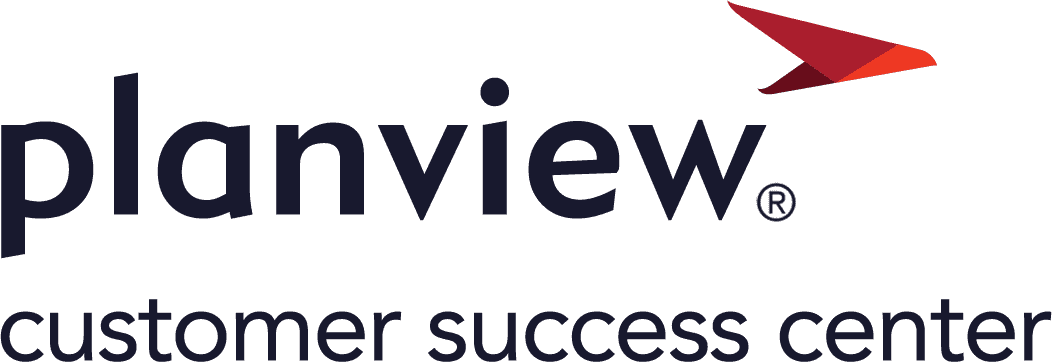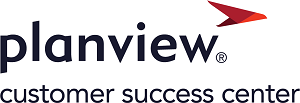Get started
Beyond timesheeting: work management adoption pathway
| 1. Get started | 2. Design and set up | 3. Capability usage | 4. Reports and outputs |
|
Audience |
PMO, portfolio manager, project manager |
|
Objective |
Understand the foundational knowledge of managing work in Portfolios. |
What is work management?
Work management, a core function of Planview Portfolios, is a comprehensive approach to planning, organizing, and tracking work activities within an organization. It encompasses the processes, methodologies, and tools used to effectively manage projects, tasks, and resources to achieve business objectives. Work management refers to all items that sit within the Work Primary Structure, which dictates “ownership” and “responsibility for delivery” of work.
Work refers to all projects and other individual work initiatives. Work can vary from large strategic initiatives broken into controllable projects to unscheduled support requests that might take only a few minutes. The Work Primary Structure in Planview Portfolios contains all work items within your organization and is configured to help you get to the tasks and work you need to do. It also holds the work items in the Work Breakdown Structure – including projects, support tickets, epics, features, enablers, and requests.
By implementing work management, you can improve planning and scheduling at your organization by providing work managers with the ability to view and manage all work details. They can also develop the schedule or plan by defining the timeline, milestones, activities, and resources required to deliver the work.
You’re also able to improve execution and tracking, as the project manager will be able to manage the project through the execution and delivery stages and report on the overall status and health of the project.
Benefits of work management
Planning and Scheduling
- You can implement a standardized work planning and scheduling process for projects and other planned work.
- You can plan work milestones and categorize these milestones to drive project status reporting.
- You can define the phases of work or activities at a detailed level that supports resource forecasting and planning.
- You can forecast the effort required to deliver the work, expressing this demand against the relevant organizational and resource type.
- You can use schedule templates to apply planning standards and to drive consistency and efficiency.
Execution and Tracking
- You can monitor actual effort reported to timesheets and determine how this effort has contributed to project progress.
- You can have a single, timely, and accurate organization-wide view of project status, with all reporting needs being met from this single version of data.
- You can view portfolio-level status reports based on project status information.
- You can compare the performance of a project against financial and schedule baselines and schedule variance alerts.
How the Progressing Engine fits into work management
The Progressing Engine is a fundamental part of the project (work) planning and execution process and an important function in Planview Portfolios. It helps project managers and resource managers to gain an understanding of the progress of projects in Planview Portfolios and assists in the maintenance of the future schedule of the work that remains to be done to deliver the project. It also provides managers with details of their projects, such as the project’s performance, baseline variances, and exceptions and issues impacting project progress.
Managing the execution of a project is a continuous, cyclical process. The Progressing Engine is a key part of this continuous process since it helps the project manager by taking all the inputs on progress and processes them to determine the progress of the work.

Resources, through their timesheets, and project managers must Capture Data on the Progress of Work and the Progressing Engine processes these progress inputs.
The project manager's role is to Review Progress of Work and to Re-plan Remaining Scheduled Work, ensuring that delivery dates and the remaining effort required to deliver the project are realistic.
How can I easily get started with work management in Portfolios?
In the "Beyond Timesheeting" work management use case, organizations are currently using Portfolios to track time reported to a single project line in Portfolios for costing and recharging purposes, but there is not yet a plan or work breakdown structure (WBS) built out in Portfolios.
While using Planview Portfolios for timesheet entry is important for capturing actual hours worked, going beyond timesheeting to adopt more of the work management capability in Planview Portfolios can offer many benefits. This includes:
- You can forecast how much the project will cost.
- You can forecast how long the project will take, and when it will start and finish.
- You can forecast the type of resources needed to deliver the project.
- You can forecast the effort required to deliver the work, expressing this demand against the relevant organizational resource type.
- You can monitor actual effort reported to timesheets and determine how this effort has contributed to project progress.
By going beyond timesheeting, project and resource managers progress towards capacity and demand planning at an organizational level by assigning role-based requirements to projects using a high-level plan within Portfolios. This WBS typically consists of one or two levels of project phases and stages along with key project milestones, which "raises the waterline" for project and resource managers and keeps the plan simple and manageable. Resource information is up-to-date and maintained so organizations have visibility into resource non-availability and their true capacity to deliver work. Authorized resources continue to report time using timesheets, and actual hours and days spent on work are tracked for costing and recharging purposes.
It is essential to keep the work plan simple so it is easier to manage and maintain, and detailed tasks are tracked outside of Portfolios. Organizations can choose to activate ProjectPlace as a standalone solution for detailed task management, or rely on their own external tools and methods.

